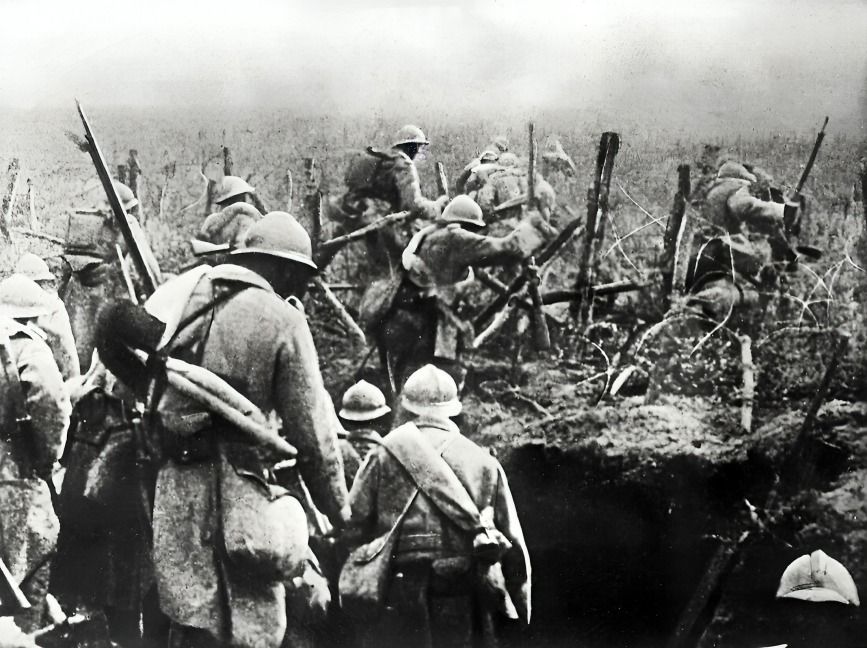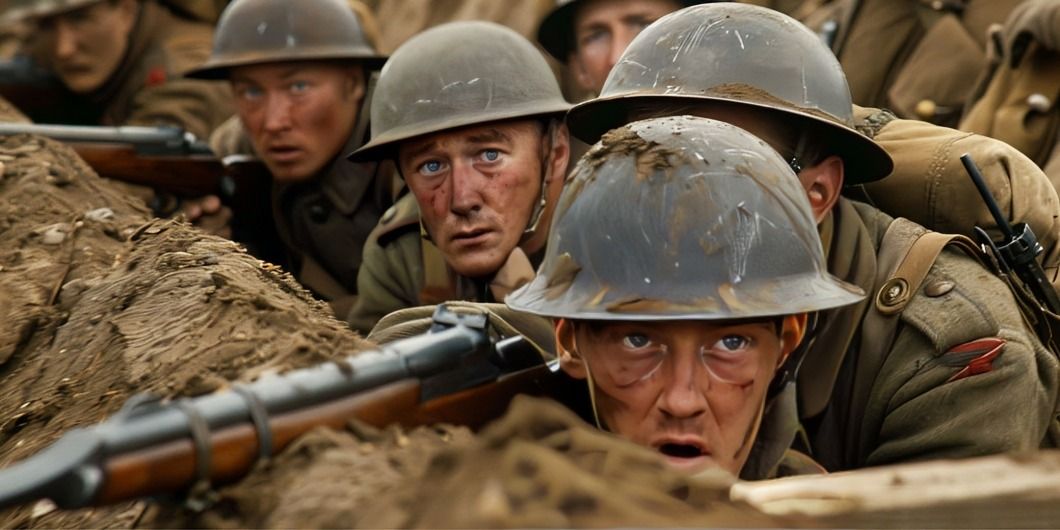
“
Life in the trenches during World War I was far from the glorified notion of battle. Soldiers faced unimaginable hardships, with conditions that were both physically and mentally taxing. In this blog, we will explore 20 interesting facts about life in WWI trenches, offering a glimpse into the daily struggles of soldiers on the frontlines. From the constant threat of enemy fire to the unsanitary living conditions, life in the trenches was marked by disease, boredom, and intense psychological strain. Yet, despite these challenges, soldiers exhibited remarkable resilience, forming close bonds and creating unique coping mechanisms. These interesting facts about life in WWI trenches will help you understand the brutal realities of trench warfare and the profound impact it had on those who lived through it. Dive into these 20 facts to uncover how trench warfare reshaped the soldiers’ experiences during one of history’s deadliest conflicts.1
”
Soldiers in WWI trenches lived in unsanitary conditions, constantly dealing with mud, rats, and lice. These poor hygiene conditions often led to widespread illness and infections spreading rapidly among troops.1
Trenches frequently flooded, especially during heavy rains. Soldiers endured standing water that made it difficult to stay dry or warm, adding to the already harsh living conditions of trench life.2
Trench warfare was physically demanding, and soldiers often spent weeks at a time in the trenches, dealing with the stress of constant enemy fire and difficult living conditions.3

Soldiers formed strong bonds in the trenches, relying on each other for emotional and mental support. Their camaraderie helped them cope with the challenges of war, even under the harshest conditions.
Trench foot, a painful condition caused by prolonged exposure to wet and cold conditions, was widespread among soldiers. It often required amputations and caused extreme suffering for those affected.4
Life in the trenches required constant vigilance, as soldiers had to be alert for surprise attacks from the enemy. Sentinels were posted around the clock to provide security for their comrades.5
"No man's land" was the deadly space between opposing trenches, filled with barbed wire and riddled with artillery shell craters. Crossing it often resulted in immediate death for soldiers attempting to advance.6

Soldiers faced significant mental stress, often resulting in "shell shock," which is now recognized as PTSD. The constant bombardment and brutal conditions led to lasting emotional trauma for many.
Trench warfare was marked by stagnation, with battles sometimes lasting for months with minimal movement of front lines. Soldiers grew frustrated with the inability to make significant progress.7
Despite the hardships, soldiers found ways to celebrate during their time in the trenches. Makeshift Christmas celebrations, for example, provided moments of joy and distraction from the horrors of war.8
Rats were a major problem in the trenches, growing large due to the abundance of food scraps and decomposing bodies. These rats spread diseases and became a major health risk.9

Soldiers in the trenches were vulnerable to chemical warfare. Poisonous gases like chlorine and mustard gas were deployed by both sides, causing devastating injuries and deaths, adding to the brutal nature of war.
Trench warfare had a significant influence on military tactics. As the conflict progressed, new technologies like tanks and planes were introduced to break the deadlock and move the lines forward.10
Despite the grim conditions, soldiers often expressed creativity. Trench walls were covered with drawings, poems, and messages, offering a glimpse into the emotional lives of soldiers coping with war.11
The weather conditions in the trenches made life even more difficult. Freezing winters brought snow and mud, while hot summers brought stifling heat, making it challenging to maintain any comfort.12
The constant noise of artillery fire and gunshots was deafening in the trenches. The sound of explosions and gunfire created an unrelenting atmosphere that contributed to soldiers' mental fatigue and fear.13
Communication in the trenches was a challenge. Soldiers used runners, pigeons, and telephones to send messages between trenches, often under enemy fire, making communication both difficult and dangerous.14

The trench system was complex, with multiple layers of defense. Trenches were connected by tunnels, which allowed soldiers to move between positions without exposing themselves to enemy fire.
Soldiers in the trenches often felt isolated from the outside world. Cut off from family and friends, they faced the emotional burden of being far from home in a brutal warzone.15
Despite the overwhelming challenges, soldiers showed incredible resilience. Their ability to form close friendships in the trenches, even in the face of constant danger and hardship, was a testament to their strength and courage.16


